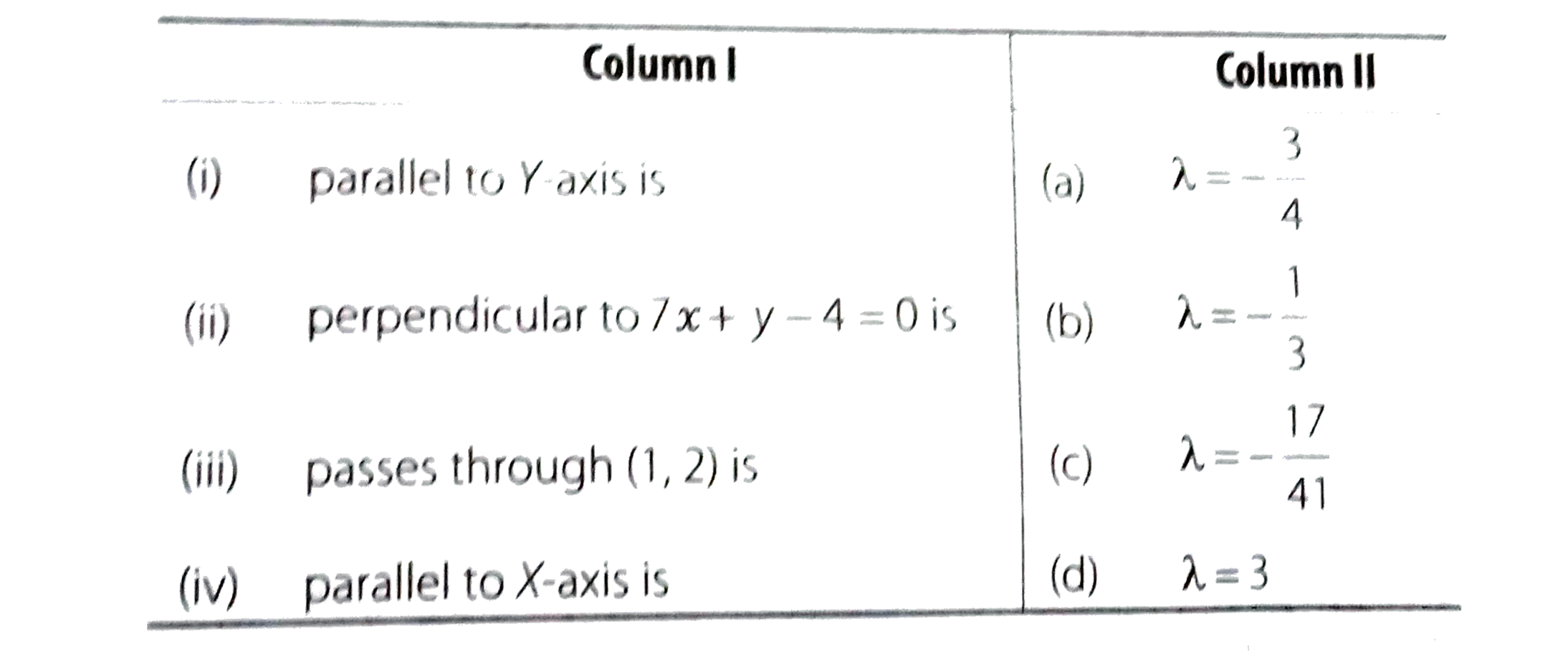A diagonal of rhombus ABCD is member of both the families of lines (x+y−1)+λ(2x+3y−2)=0and (x−y+2)+λ(2x−3y+5)=0 and rhombus is (3, 2). If the area of the rhombus is 12√5 sq. units, then find the remaining vertices of the rhombus.
Step by step video & image solution for A diagonal of rhombus A B C D is member of both the families of lines (x+y-1)+lambda(2x+3y-2)=0and (x-y+2)+lambda(2x-3y+5)=0 and rhombus is (3, 2). If the area of the rhombus is 12sqrt(5) sq. units, then find the remaining vertices of the rhombus. by Maths experts to help you in doubts & scoring excellent marks in Class 11 exams.
Updated on:21/07/2023Similar Questions
A diagonal of rhombus ABCD is member of both the families of lines (x+y−1)+λ(2x+3y−2)=0and (x−y+2)+λ(2x−3y+5)=0 and rhombus is (3, 2). If the area of the rhombus is 12√5 sq. units, then find the remaining vertices of the rhombus.
View SolutionA diagonal of rhombus ABCD is a member of both the family of lines (x+y+1)+λ1(2x+3y−2)=0and(x−y+2)+λ2(2x−3y+5) where λ1,λ2∈ R and one of the vertex of the rhombus is (3,2) . If area of the rhombus is 2√5 square units then find the length of semi longer diagonal of the rhombus ..........
View Solution
Knowledge Check
Consider the family of lines 5x+3y−2+λ(3x−y−4)=0andx−y+1+μ(2x−y−2)=0. The equation of a straight line that belonges to both the families is
A5x−2y−7=0B3x+y−2=0C5x+2y−3=0D2x+y−1=0Consider the family of lines 5x+3y−2+λ(3x−y−4)=0 and x−y+1+μ(2x−y−2)=0 Equation of straight line that belong to both families is ax+by−7=0 then a+b is
A1B3C5D7
The value of the λ if the lines (2+3y+4)+λ(6x−y+12)=0 are

View SolutionConsider the family of lines 5x+3y−2+λ1(3x−y−4)=0 and x−y+1+λ2(2x−y−2)=0. Find the equation of a straight line that belongs to both the families.
View SolutionA member of the family of lines (x+y−1)+λ(2x+3y−2)=0,λ∈R intersects a member of the family of lines (ax+y−2)+α(bx+4y−5)=0,α∈R , at a fixed point. The ordered pair (a, b) is
View SolutionThe equation of line belonging to the family of lines (5x+3y−2)+λ(3x−y−4)=0,λ∈R ,and at greatest distance from (0,0) is
View SolutionLocus of the image of the point (1,1) in the line (5x–2y−7)+λ(2x−3y+6)=0, λ∈R, is
View SolutionLocus of the image of the point (1,1) in the line (5x−2y−7)+λ(2x−3y+6)=0 (lambda in R), is
View Solution
